Michael Swanwick's Blog, page 4
October 3, 2025
AUTUMN DREAMS (Part 3 of 31)
.
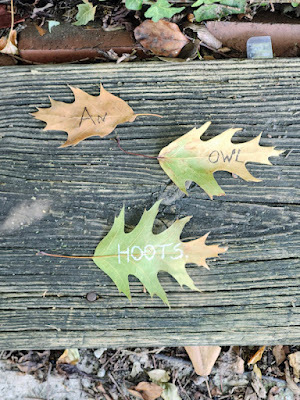

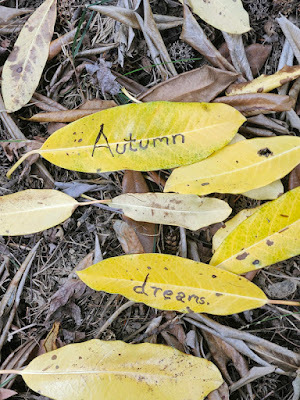

Above: Every autumn, I create a Halloween story, write it out on leaves (one word per leaf), photograph the leaves, and then abandon them where I found them. The story is then serialized here, starting on October 1 and concluding on the 31st--All Souls Day. (For those who are confused, the pumpkins signal a paragraph break.)
*
October 2, 2025
AUTUMN DREAMS (Part 2 of 31)
.
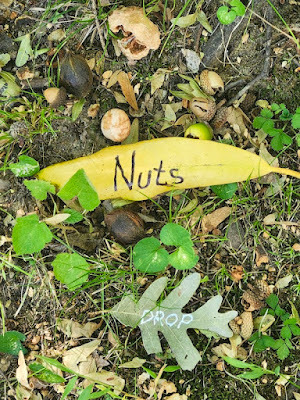
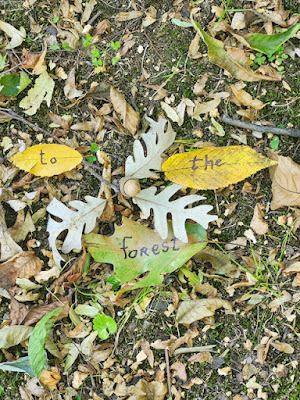

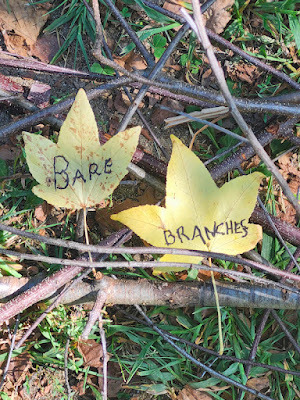
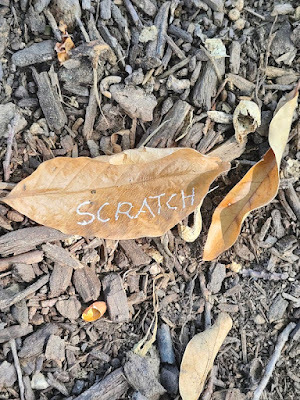
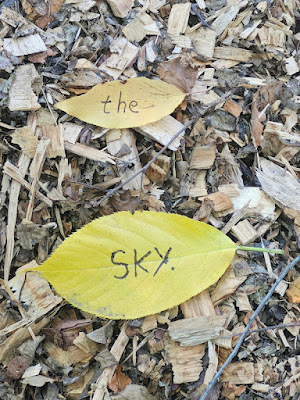
Above: Every autumn, I create a Halloween story, write it out on leaves (one word per leaf), photograph the leaves, and then abandon them where I found them. The story is then serialized here, starting on October 1 and concluding on the 31st--All Souls Day.
*
October 1, 2025
AUTUMN DREAMS (Part 1 of 31)
.

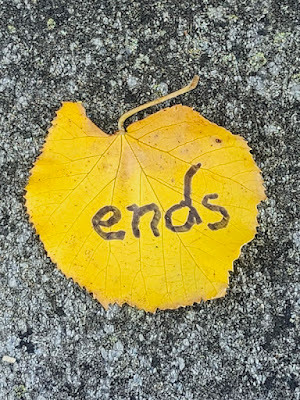
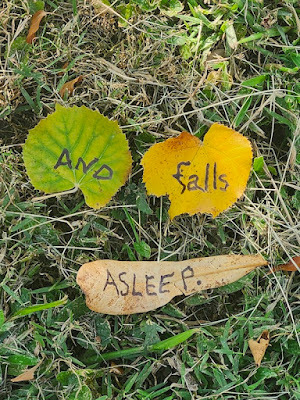
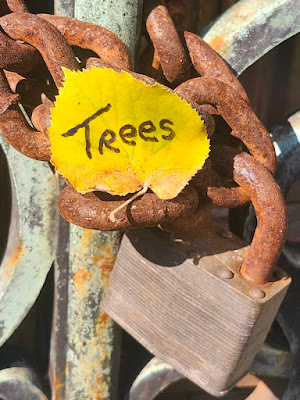
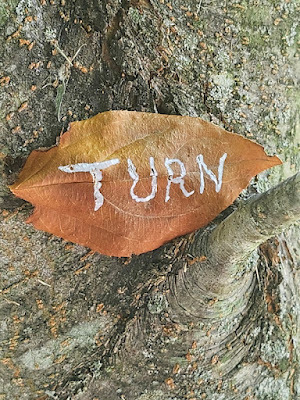
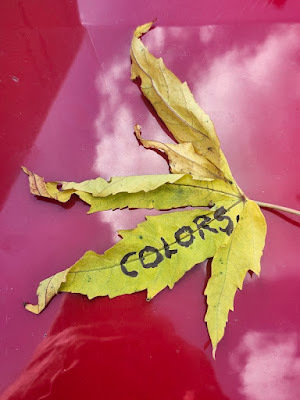
Above: Every autumn, I create a Halloween story, write it out on leaves (one word per leaf), photograph the leaves, and then abandon them where I found them. The story is then serialized here, starting on October 1 and concluding on the 31st--All Souls Day.
*
Mispec Moor
.
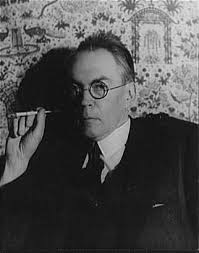
Among the many reasons why readers of the 1920s were in awe of James Branch Cabell was his scholarly erudition. I just learned that in Beowulf, mistige moras means "misty moors." Once seen, an obvious source of his Mispec Moor.
Cabell was always great on place names but never better than here, for Mispec Moor is an anagram for Compromise. So at one and the same time, he was scholarly, romantic, and cynical.
Jimmy, I doff my hat to you.
*
September 11, 2025
One! Sale! Day! Only!!!!
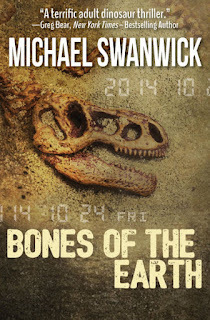 .
.Open Road Media have informed me that the e-book of Bones of the Earth will be on sale on the 13th, for only 1.99. US only.
Yes, I'm tired of these promotions too. But Open Road is actively promoting my work, and I owe it to them to pass along their occasional sales. Also, there are new readers out there who would like to know exactly how good my work is at an affordable price. So...
New Readers! A) Extremely good, and B) Quite affordable.
I spent over a year researching that books, interviewing paleontologists in the Smithsonian and elsewhere, traveling hundreds of miles to examine specific fossils, attending scientific symposiums, and having a ball.
If you're a gonnabe SF writer, I can recommend writing about dinosaurs wholeheartedly.
*
September 4, 2025
The Adventures of Mary Darling by Pat Murphy
.
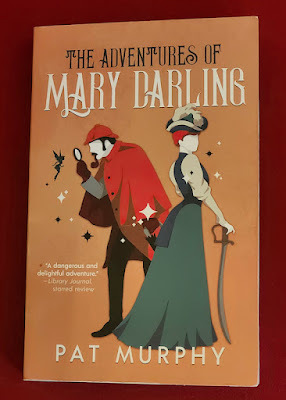
I have just finished reading Pat Murphy's new novel, The Adventures of Mary Darling. It is a romp. Or, rather, it is two romps, one at the beginning and the other at the end. In the middle is a thick slab of the cruelties of the Victorian era. All carefully garnished to make a romp-and-misery sandwich.
In brief, when Peter Pan comes to Kensington, London, to steal away Wendy and her brothers, her mother, Mary Darling, determines to rescue them. In her youth, she too had been stolen away by Peter Pan and she knew what a wretched, hungry, and often fatal existence the Lost Boys endured. Her uncle, John Watson, gets involved and brings along the celebrated detective, Sherlock Holmes. Who is, fair warning (see below), held up for scorn for his quintessentially male habit of explaining everything to those who already know more than he does.
Ms. Darling, as it turns out, learned swordplay and derring-do in the course of her escape from Neverland. Thus, the romp.
Near novel's end, when Mary is restored home, her brother gives a cleaned-up, fairy-free version of their adventures based on boys' fiction of the time. And Murphy writes:
Over time, Mary came to realize that the good people of Cooktown believed Tom because they wanted to believe him. There was a reason that adventure novels were popular. They told the stories that people wanted to believe--tales of terrifying savages and bold British explorers. People wanted to believe that plucky children could stand up to pirates and survive. They wanted to think that a British pirate captain like Captain Scratch would send the children home.
All true, of course. But the text, as narrated by Wendy's daughter Jane, is our current version of Victorian wish fulfillment pulp. Today, what we want to believe is that a woman of character can face down pirates and scoundrels of all kinds and find sisterly support from networks of capable women everywhere. It is no more untrue than the boy's fiction of a century and a half ago. And as needed now as those tales were back when.
And a word of warning . . .
Because TAoMD is about men controlling the narrative and the need for women to subvert that and to create alternative support groups, men come in for their share of lumps. The primary punching bag here is Sherlock Holmes. Which I thought was just a frazz unkind but he can take it. Dr. Watson, however--who as portrayed as an honorable, kindly, and supportive man, a Mensch in every way, also comes in for his share of criticism and, while I understand why his virtues shouldn't render him exempt from criticism, that's a little harder to accept.
I enjoyed the book despite this. But you know yourself best. If this is going to bother you... Well, you've been warned.
*
August 15, 2025
Sale! Tales of Old Earth! One Day Only!
.
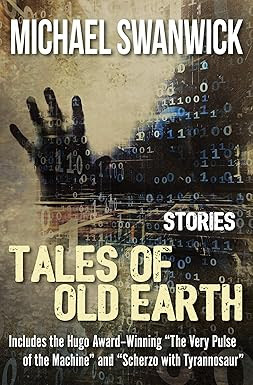
The Worldcon has begun and I've got work to do! But I would be remiss if I didn't share Open Road Media's e-book sale Tales of Old Earth.
Here's what they wrote:
Hello,
We are pleased to let you know that the following ebook(s) will be featured in price promotions soon.
August 14, 2025
Sad Serenity and Me
.

Look what came in the mail! Sad Serenity sent me a CD of their latest album, Tiny Miracles which contains a song based on (with my permission, of course) my story, "An Empty House With Many Doors."
Sad Serenity is, that nice Mr. Google tells me, "an international prog Metal collective centered around German multi-instrumentalist Marcell Kammerer." The song they crafted around the bones of my tale is titled "Tell the Moon."
I like it quite a lot. In fact, I like the whole album quite a lot.
I once wrote a story with the extraordinary title "For I Have Lain Me Down on the Stone of Loneliness and I'll not be Back Again," based on Janis Ian's song "Mary's Eyes." Commenting either on it or on the anthology of stories based on her songs Stars, Janis commented on what an extraordinary thing it is to see someone pick up a piece of art you made and turn it into a new and different work of art.
She's right there. When I wrote it, "An Empty House With Many Doors" was a very private meditation of what I would do if my wife Marianne were to die. It proved to be very popular, probably because there's so much emotion packed into it, which is something I was not expecting. And now it's traveling about the world of music, far from my control.
Safe traveling, little story-turned-song. I wish you all the best.
You can hear the song here. And if you're of a mind to, you can buy the album here. Much like science fiction writers, international Prog Metal collectives need all the support they can get.
*
August 13, 2025
Nisi Shawl's Five Petals of Thought
.

In an age that has no shortage of quixotic projects, this one stands out as quixotic indeed. But Nisi Shawl is no ordinary writer and no ordinary woman. I'll let Eileen Gunn explain this unimaginable-before-crowdfunding project:
Much thanks to everyone who has donated to help Nisi Shawl write The Five Petals of Thought. Thanks to you all, we are three-quarters of the way there! I want Nisi to tell you a bit about the book-dream they had. Take it away, Nisi:
Before I even started writing it, this book was so real I dreamed about it. Briefly, my dream went like this: ˆI overhear two co-workers discussing work. One is telling the other about all the difficulties she’s been having with a manager: misunderstandings, missed opportunities and so forth. The second asks the first one why she didn’t just use the Five Petals of Thought? Which, of course, is the obvious thing to do, everyone agrees. From above, I see the Ramblin School’s rolling acres, bounded by fieldstone walls, cuddle and comfort the white clapboard buildings, the wide steps, and the generous, high roofs under which study the students of the Five Petals. Polished wooden floors, spacious classrooms and gathering places--all of it, indoors and outdoors, is home to this historic movement. A diagram is shown to me at this point, a simple flower outline with each Petal’s name on the corresponding petal. It lists them as Thought, Action, Observation, Integration, and New Action.
Then I woke up. I wanted to find out more about the Five Petals philosophy, so I looked for sources online. I searched Wikipedia and there was nothing. Googled various combinations, key words, and nothing. The Five Petals (which I understood somehow was also sometimes known as the New Bedford Rose), did not exist. Had never existed. Would never exist fully. Unless I wrote it.
Thank you, Nis! And thank you all for your contributions! You are helping to make this book a reality. Over the next few days, I'll post more from Nisi about "The Five Petals of Thought" and where she plans to take it. If you are on social media, please let others know about our fundraiser by posting a link to it to your followers. Thank you all so *very* much!
-- Eileen Gunn
If you are moved to help, as was I, you can find the Gofundme account here.
*
August 12, 2025
My Worldcon Schedule
.
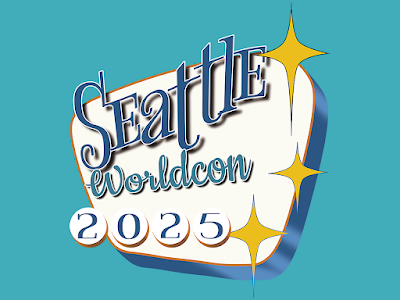
The 2025 Worldcon in Seattle is almost upon us! And, following ancient tradition, here is my Worldcon Schedule:
Friday
1:30pm-2:30pm
Science Fiction Beyond The Grave
From Philip Jose Farmer's Riverworld toTV's Upload, science fiction has often speculated about theafterlife. Is this always fantastical? Does it tread on religiousbeliefs? This panel will discuss the intersection of science fictionand what Shakespeare described as The Undiscovered Country.
Marie Guthrie, PhD (M), Amy Sundberg,Andrew Sweet, Emily C. Skaftun, Michael Swanwick
3:00pm-4:00pm
Generational Tension: Old Guard vsRevolutionaries
Revolutions in SFF writing come withconflict as the establishment looks down its nose at the ruffiansoverturning "settled"genre conventions and creating spacefor stories"”and authors"”previously unwelcome. Has italways been thus? Do things look different to yesterday'sbomb-throwers a few decades after they've become the new Old Guard?Come hear writers and editors who straddle revolutionary time periodsgoing back to the New Wave of the 1960s and 70s talk aboutgenerational literary conflict.
Gary K Wolfe (M), Ctein, F. Brett Cox,Michael Swanwick, Tim Bennett
6:00pm-7:00pm
Autographs
Saturday
12:00pm-2:30pm
Flash Fiction Workshop (double slot)
Flash fiction can delight a heart ordeliver a punch in the space of 500-1000 words, which may be why it'sone of speculative fiction's favorite and most sellable forms. Learnhow to write, edit, and submit your own flash fiction.
Michael Swanwick
6:00pm-7:00pm
The Radical Fiction of Joanna Russ
Joanna Russ, author of The Female Man,wrote some of the most radical fiction of the 1960s and 1970s. TheFemale Man has remained consistently in print and is one of the mostexperimental and challenging books of our genre. This panel willdiscuss her work (short stories and novels) and its effects.
Sue Burke (M), Catherine Lundoff,Langley Hyde, Michael Swanwick, Rich Horton
Some intersting stuff there. Will we live up to it? There's only one way to find out.
*
Michael Swanwick's Blog
- Michael Swanwick's profile
- 552 followers



